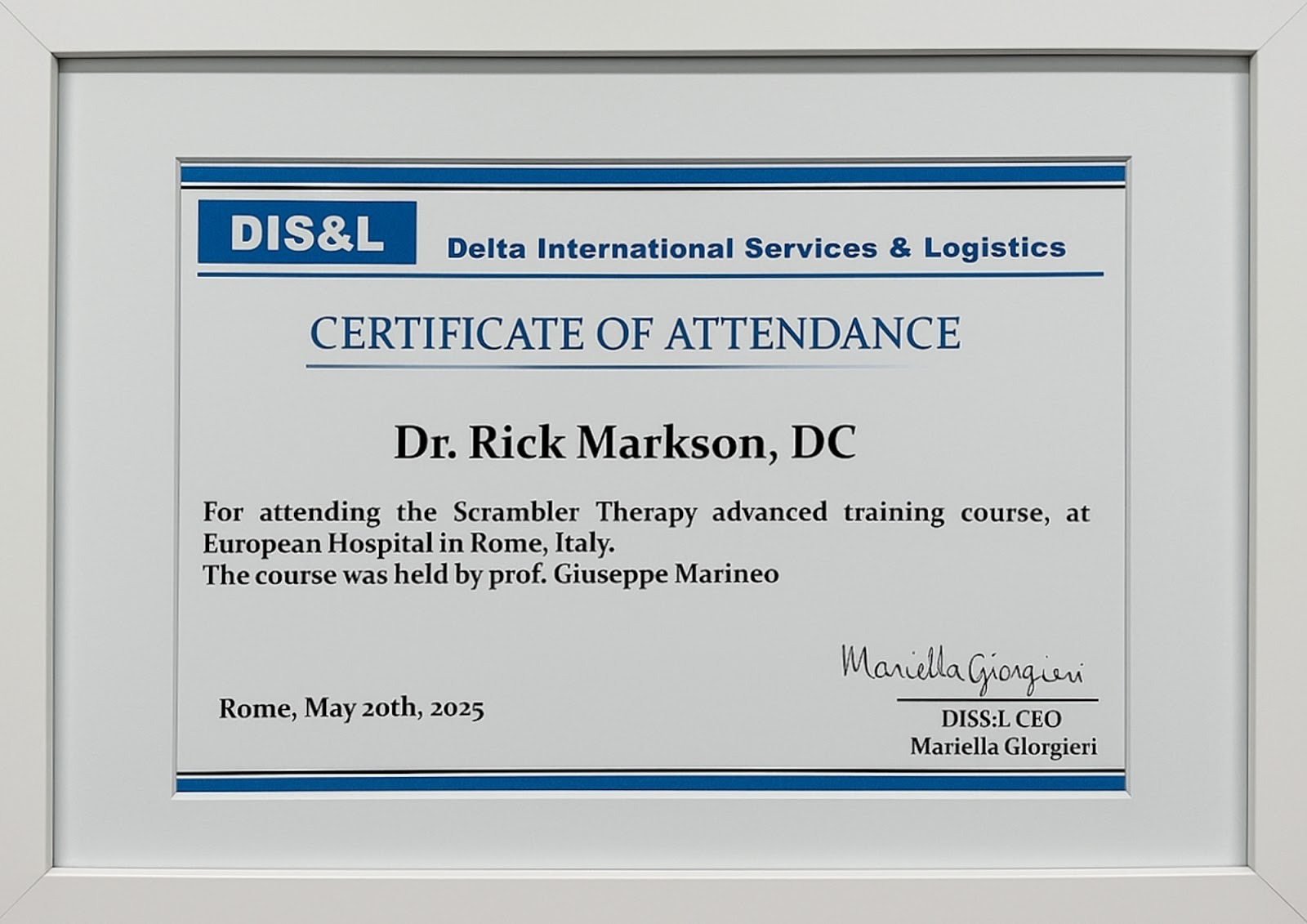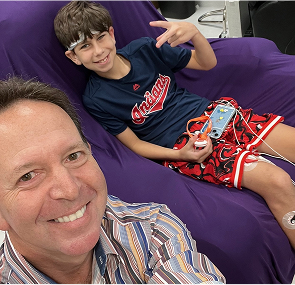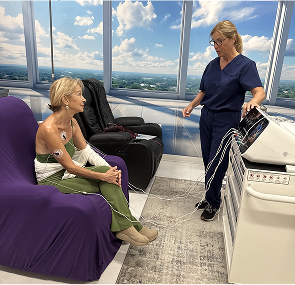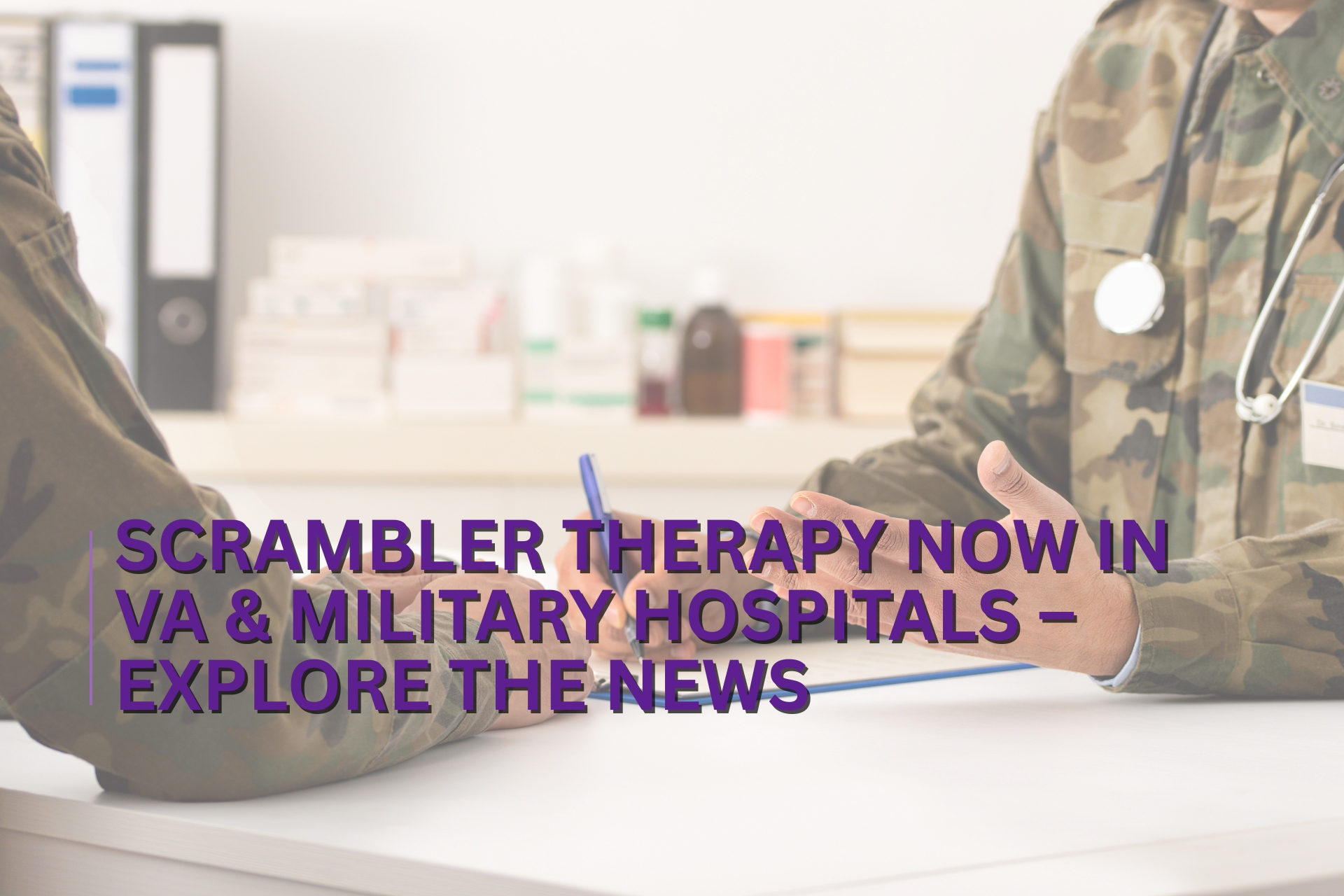Scrambler Therapy Outcomes in Diabetic Neuropathy Research

Scrambler Therapy is a non-invasive method that targets chronic nerve pain, including diabetic neuropathy. Diabetic neuropathy affects over 50% of individuals with diabetes, causing pain, numbness, and sensory loss due to prolonged high blood sugar. Scrambler Therapy, developed as a pain rewire therapy, offers a novel solution by retraining the nervous system’s response to pain. Its emergence as an FDA-cleared option signals a shift in chronic pain management away from pharmacological interventions.
This therapy stimulates sensory nerves with controlled electrical signals. These override the pain signals typically sent to the brain, leading to symptom relief. In diabetic nerve pain cases, it represents a growing alternative to long-term drug use or invasive procedures.
Next, we’ll explore how Scrambler Therapy works and why it’s gaining medical attention.
What Is Scrambler Therapy?
Scrambler Therapy uses the MC-5A device to transmit artificial “non-pain” signals via surface electrodes to the nervous system. Invented by Professor Giuseppe Marineo in Italy, the therapy is grounded in neuroplasticity principles and aims to "scramble" pain signals before they reach the brain. It differs significantly from TENS (Transcutaneous Electrical Nerve Stimulation), which blocks pain perception temporarily. Scrambler Therapy seeks to replace pain coding at the central level.
Key Features of the Scrambler Therapy Device
Mechanism Summary
- Signal override: Sends competing, non-pain signals to confuse the pain circuits.
- Neuroplastic impact: Encourages the brain to reinterpret chronic pain input as normal sensory feedback.
- Peripheral input rerouting: Helps reset damaged nerve signal pathways.
This mechanism makes it a promising nerve signal therapy for various conditions beyond diabetes, such as chemotherapy-induced neuropathy, post-surgical pain, and lower back disorders.
Coming up: a closer look at diabetic neuropathy and how it affects nerve health.
Diabetic Neuropathy Explained
Diabetic neuropathy results from prolonged hyperglycemia causing nerve damage, often in the feet, legs, and hands. It is categorized into four main types: peripheral, autonomic, proximal, and focal neuropathy. The most common is peripheral neuropathy, responsible for burning pain, tingling, and numbness.
Main Symptoms and Attributes
- Numbness or loss of sensation
- Tingling or “pins and needles”
- Burning or sharp pains
- Muscle weakness or balance issues
Causes and Progression
Diabetes nerve damage progresses silently, often starting with minor discomfort and escalating into severe functional impairments or diabetic foot complications. Managing pain without increasing medication load has become crucial.
Next, we look at the clinical outcomes of Scrambler Therapy in diabetic patients.
Scrambler Therapy Outcomes in Diabetic Neuropathy Research Studies
Research shows Scrambler Therapy leads to significant reductions in pain scores for diabetic neuropathy patients.
In multiple randomized controlled trials (RCTs) and peer-reviewed studies, patients reported consistent relief, sustained over weeks or months.
Notable Research Findings
- A 2021 study published in Pain Physician Journal involved 40 diabetic patients, reporting a mean VAS score drop from 8.2 to 2.1 after 10 sessions.
- Follow-ups at 3 and 6 months showed pain relief maintenance in 75% of participants.
- A meta-analysis of six studies showed a pooled efficacy rate of 78% for neuropathic symptom reduction.
Clinical Outcome Metrics
These results highlight Scrambler Therapy’s potential as a long-term, non-pharmacologic solution for neuropathy pain.
Let’s explore how this pain relief is achieved at the neurobiological level.
Mechanisms of Pain Relief in Scrambler Therapy
Scrambler Therapy rewires pain memory in the brain by modulating incoming nerve signals. Its foundation lies in neuroplasticity—the brain’s ability to reorganize itself based on new input.
How It Works Neurologically
- Central Sensitization Disruption: Replaces hyperactive pain signals processed in the spinal cord’s dorsal horn.
- Nociceptor Interruption: Competes with C-fiber inputs, responsible for chronic burning pain.
- Neurotransmitter Rebalancing: May reduce abnormal pain responses linked to glutamate and substance P.
- CNS Adaptation: Builds new sensory pathways that reinforce “no pain” signaling.
This signal override therapy effectively re-educates the central nervous system to respond differently to previously painful stimuli—crucial in treating chronic diabetic nerve pain.
In the next section, we review real patient cases and their reported outcomes.
Case Studies and Patient Experiences
Patients with diabetic neuropathy report major improvements after multiple sessions of Scrambler Therapy.
Medical journals and anecdotal reports show positive therapy cycles with minimal side effects.
Case Highlights
- Patient A (Type 2 Diabetes, Age 62)
- Baseline VAS: 9
- After 10 sessions: VAS dropped to 2
- Sustained remission for 3 months
- Patient B (Peripheral Neuropathy, Age 57)
- Reported nightly foot burning pain
- After 6 sessions, slept through night without discomfort
- 80% reduction in tingling sensations
Summary of Patient Feedback
These experiences position Scrambler Therapy as a viable diabetic nerve pain solution for long-term relief.
How does it compare to conventional treatments? See the comparison below.
Comparison with Other Neuropathy Treatments
Scrambler Therapy offers comparable or better outcomes than traditional diabetic neuropathy treatments, with fewer side effects.
Comparative Overview
Scrambler Therapy stands out as non-invasive, drug-free, and focused on modifying nerve response rather than masking symptoms.
Now, let’s explore where patients can access this treatment and how affordable it is.
Accessibility and Availability of Scrambler Therapy
Scrambler Therapy is available in specialized clinics across the US, Europe, and Asia, with varying insurance coverage.
How to Access Scrambler Therapy
- Find certified clinics through official device distributor sites or hospital partnerships.
- Session costs range from €80–€150 or $100–$200 per session.
- Most sessions require referrals, especially if insurance billing is involved.
Insurance and Coverage
Accessibility continues to grow, with more hospitals adopting this therapy in integrative pain care.
What about limitations and criticisms? Let’s assess the evidence.
Limitations and Criticisms of Scrambler Therapy in Neuropathy
Some experts express skepticism due to small study sizes, lack of blinding, and unclear long-term effects.
Main Concerns
- Study Design Weaknesses: Few double-blind trials; possible placebo effects.
- Sample Size Limitations: Most studies involve <100 patients.
- Standardization Issues: Variable electrode placement and protocol inconsistency.
- Relapse Timing: Relief may fade after 3–6 months, requiring repeat sessions.
Despite these, most clinical evidence still favors Scrambler Therapy's efficacy for short-to-mid-term pain relief.
Now, let’s see how it fits into broader diabetes care.
Integration with a Comprehensive Diabetic Neuropathy Care Plan
Scrambler Therapy should complement, not replace, broader diabetes management strategies.
Multi-Modal Neuropathy Care Plan
- Glycemic Control: Stable blood sugar is key to preventing nerve deterioration.
- Nutrition Support: Low-glycemic, anti-inflammatory diet reduces oxidative stress.
- Physical Activity: Boosts circulation and slows nerve degeneration.
- Foot Care: Prevents complications like ulcers.
- Regular Monitoring: Endocrinologists and neurologists oversee progression.
Combining therapy with lifestyle modifications ensures sustainable results and prevents symptom recurrence.
What’s on the horizon for this innovative therapy?
Future of Scrambler Therapy in Diabetic Neuropathy Research
Ongoing clinical trials and technological upgrades are shaping the next generation of Scrambler Therapy.
Innovations and Trends
- NIH-supported trials are evaluating long-term effects in diverse populations.
- AI-guided stimulation models are being tested for adaptive signal modulation.
- Portable units may emerge for at-home treatment.
- Research Gaps include large-scale placebo-controlled studies and pediatric applications.
Expect continued evolution of Scrambler Therapy in neuropathy treatment pipelines worldwide.
Let’s now address the most common questions patients have.
FAQs – Scrambler Therapy Outcomes in Diabetic Neuropathy
How effective is Scrambler Therapy for diabetic neuropathy?
Most patients experience a 50–90% reduction in pain, with relief lasting several months.
How many sessions are needed?
Typically 8–12 sessions over two to three weeks provide optimal results.
Are there side effects?
Side effects are rare. Some report mild skin irritation from electrode pads.
Is the treatment permanent or temporary?
Relief is often temporary (3–6 months) but can be repeated as needed.
Is it covered by insurance?
Coverage varies by country and plan. In the U.S., partial coverage is available under specific CPT codes.
Experiencing Chronic Pain in South Florida?

Discover South Florida Scrambler Therapy is one of the nation’s leading clinics for noninvasive chronic pain relief, offering FDA-cleared Scrambler Therapy® for adults and children. Co-founded by Dr. Rick Markson, one of the few practitioners worldwide to receive advanced certification directly from the therapy’s inventor in Rome, our clinic delivers globally recognized expertise with compassionate, personalized care. If you or a loved one is living with treatment-resistant nerve pain, we invite you to schedule a consultation and explore a life beyond pain.
Recommended Reads:
📘 What is scrambler therapy?
📘 What to Expect During a Scrambler Session
📘 CRPS Pain Relief Without Drugs—Real Patient Stories
📘 Conditions that scrambler therapy can treat
Take the Next Step: Free Consultation at South Florida Scrambler

Every day counts when we suffer from chronic pain. South Florida Scrambler Therapy offers a free initial consultation to determine if Scrambler is right for you. Schedule Today:
- Speak directly with Dr. Rick Markson’s team
- Learn about treatment protocols and insurance
- Complete a customized treatment plan
- Start seeing results within days, not months
📞 Call Now or Visit website: www.southfloridascramblertherapy.com
📍 We serve Palm Beach, Fort Lauderdale, and Miami from our location at 100 NW 100th Ave, Plantation
You Can Follow Us through Our Social Media:
📸Instagram—Day-in-the-life stories from our patients
👍Facebook—Success journeys and community support
You deserve to laugh, and enjoy life without pain. The journey starts here.
Start Your Pain-Free Journey Today





